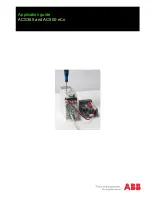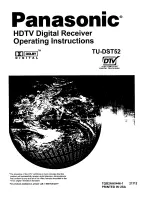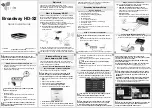
10
OEM Series™ I/O Guide
MDS 05-3624A01, Rev. B
show the losses that occur when using various lengths
and types of cable at 200 and 400 MHz, respectively. Regardless of the
type of cable used, it should be kept as short as possible to minimize
signal loss.
2.4 Power Connection
The transceiver can be operated from any well-filtered 10 to 30 Vdc
power source. The power supply must be capable of providing at least
600 milliamperes if 2 watt output is planned. Supply the power to the
power connector (see
).
Do not power the radio through Pin 18 of the DB-25 Interface
connector, as this does not provide over-current input protection for the
radio. Pin 18 is intended only as an auxiliary output for powering a
low-current (1.0 Amp max.) device, such as an RTU.
NOTE:
The radio is designed for use in negative ground systems only.
Table 2. Length vs. Loss in Coaxial Cables at 200 MHz
Cable Type
3 Meters
(10 Feet)
15 Meters
(46 Feet)
30 Meters
(91 Feet)
150 Meters
(525 Feet)
RG-8A/U
0.32 dB
1.6 dB
3.2 dB
16 dB
1/2 inch HELIAX
0.10 dB
0.49 dB
0.98 dB
4.9 dB
7/8 inch HELIAX
0.05 dB
0.27 dB
0.54 dB
2.7 dB
1-1/4 inch HELIAX
0.04 dB
0.20 dB
0.40 dB
2.0 dB
1-5/8 inch HELIAX
0.03 dB
0.17 dB
0.33 dB
1.65 dB
Table 3. Length vs. Loss in Coaxial Cables at 400 MHz
Cable Type
10 Feet
(3.05 Meters)
50 Feet
(15.24 Meters)
100 Feet
(30.48 Meters)
500 Feet
(152.4 Meters)
RG-8A/U
0.51dB
2.53 dB
5.07 dB
25.35 dB
1/2 inch HELIAX
0.12 dB
0.76 dB
1.51 dB
7.55 dB
7/8 inch HELIAX
0.08 dB
0.42 dB
0.83 dB
4.15 dB
1-1/4 inch HELIAX
0.06 dB
0.31 dB
0.62 dB
3.10 dB
1-5/8 inch HELIAX
0.05 dB
0.26 dB
0.52 dB
2.60 dB
CAUTION
POSSIBLE
EQUIPMENT
DAMAGE
















































